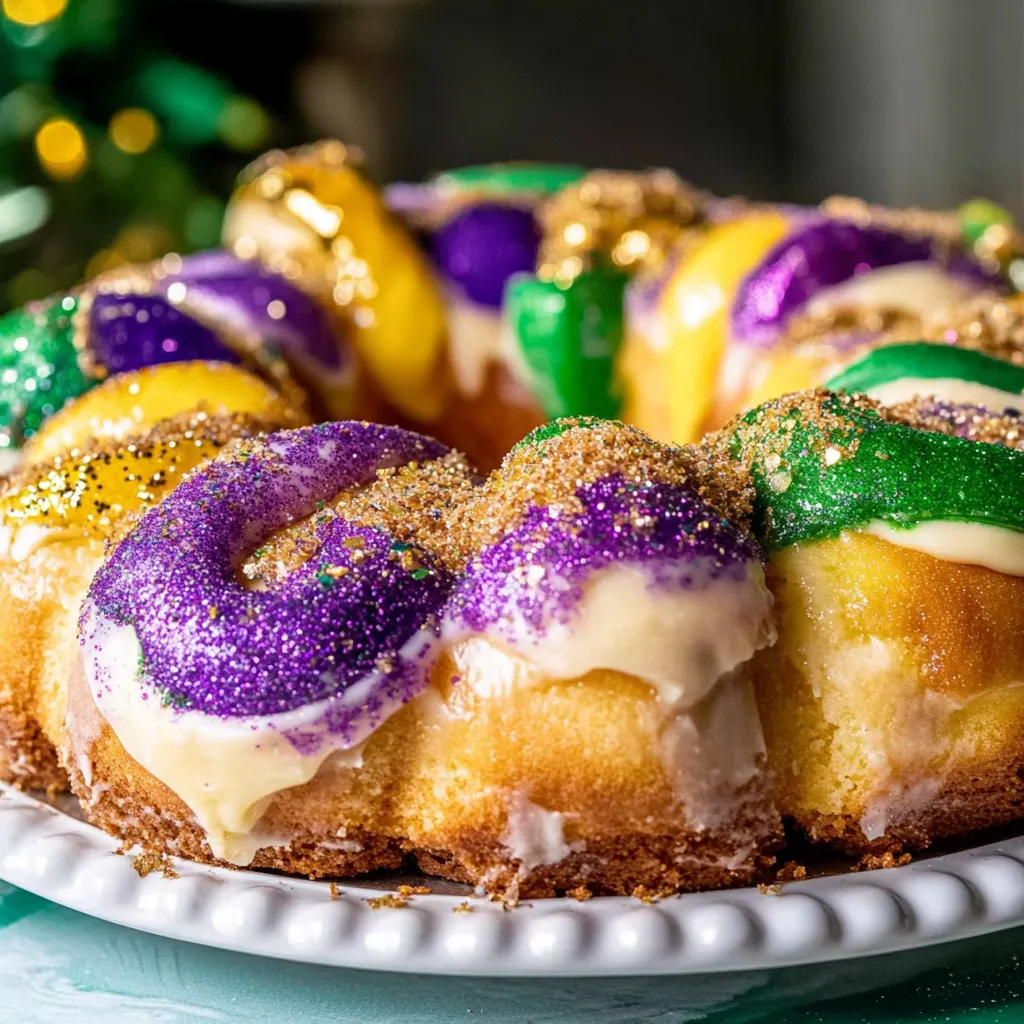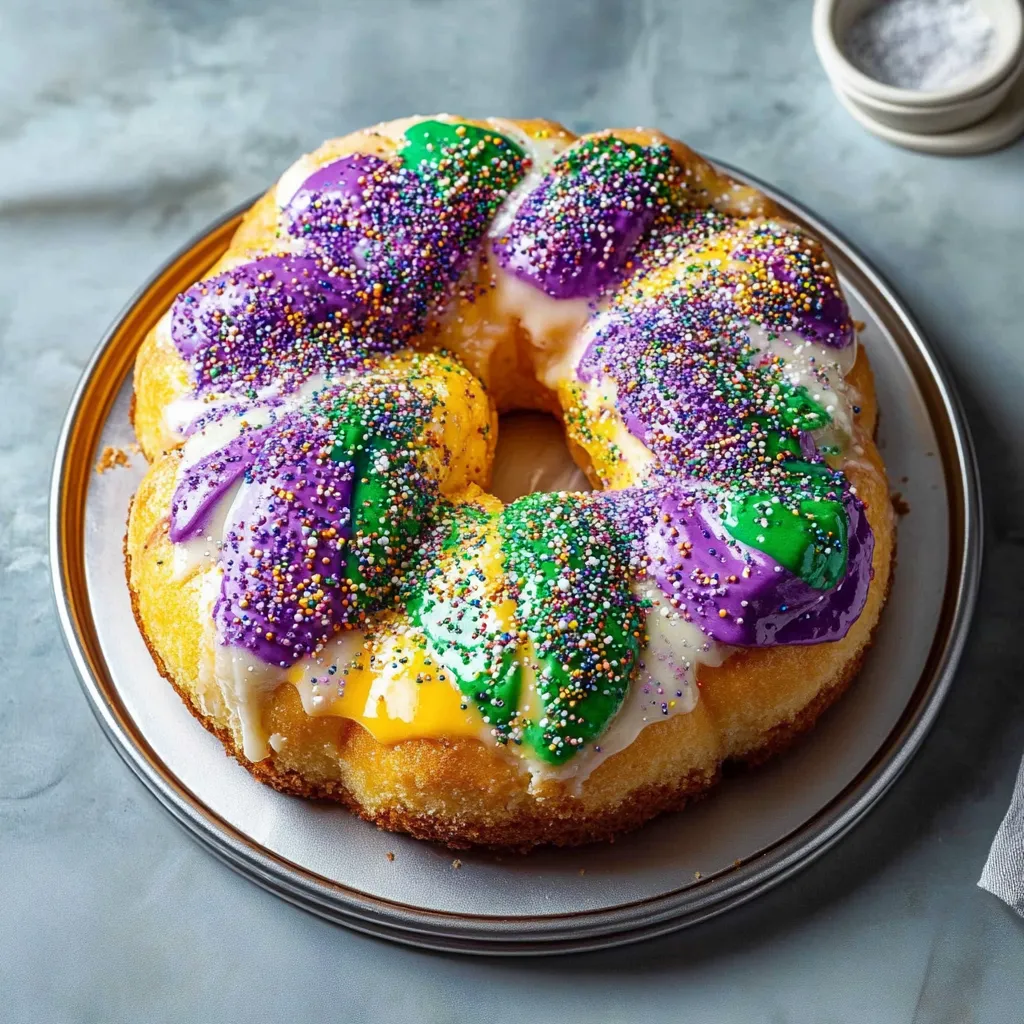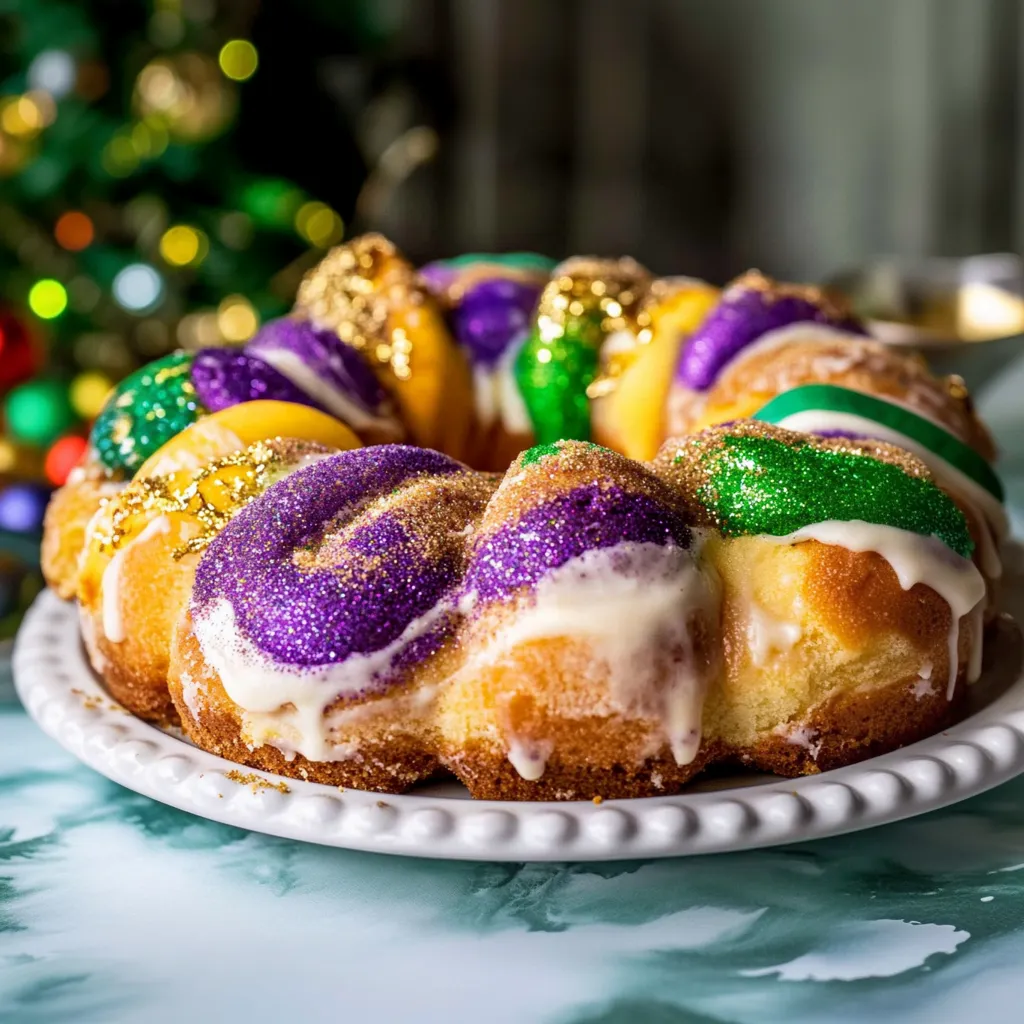 Pin it
Pin it
A celebration brioche ring dotted with colorful sugars and containing a lucky token - the Mardi Gras King Cake turns rich, sweet dough into a beloved New Orleans tradition. This homemade version brings all the fun and meaning of carnival season while giving you a soft, tasty treat that's way better than anything from stores.
I whipped this up for a Mardi Gras get-together last year, and everyone had a blast hunting through their pieces for the hidden baby. The trick? Don't rush the brioche dough - give it time to develop just right.
Key Ingredients and Choices
- All-Purpose Flour: Gives you that soft, perfect texture
- Active Dry Yeast: Makes the dough puff up nicely
- Butter: Grab the good stuff for better flavor
- Eggs: Add richness and help with structure
- Colored Sugar: Purple, green, and gold for classic look
- Fillings: Pick between cinnamon or cream cheese
How To Make It
- 1. Making Your Dough
- Get your yeast bubbling first, Add things bit by bit, Work dough until it feels smooth
- 2. Getting Fillings Ready
- Fix up filling during dough rise time, Spread it out evenly, Press edges together well
- 3. Creating The Shape
- Keep dough same thickness everywhere, Gently twist the pieces, Make a nice oval ring
Meaning and Custom
Knowing what's behind this cake makes it even more special. The bright colors stand for faith, justice, and power, adding meaning to its fun look. Its round shape reminds us of a king's crown, showing its royal roots. Finding the hidden baby means good luck, making that moment extra exciting for whoever gets it.
 Pin it
Pin it
Prep-Ahead Tricks
Getting stuff ready early can make baking day much easier. You can mix up your dough the night before and stick it in the fridge after it rises once. Next day, just shape it when you're ready and bake it up for the freshest taste and texture.
Getting Temperatures Right
Getting your temps right makes all the difference. Warm your milk to about 110-115°F to wake up the yeast, and make sure eggs aren't cold from the fridge. When your bread is done, the inside should hit about 190-195°F for perfect doneness.
Keeping It Fresh
Storing your cake right keeps it yummy longer. It'll stay good on your counter for 2-3 days. Want to save it longer? Freeze it without frosting for up to two months. When you want some, just warm it up a bit to bring back its softness.
Our family always throws in some orange zest in the dough - it adds this faint citrus kick that works really well with both filling options.
I've played with this recipe through many Mardi Gras parties, and I've learned that taking your time pays off. The way the rich dough builds flavor while rising and how the filling blends with the bread makes something truly party-worthy. Whether you make it during carnival time or for any special day, this King Cake shows how old traditions can bring both amazing food and deeper connections to culture.
Background and Cultural Roots
King Cake started in Europe, mainly France and Spain, before landing in New Orleans. People in medieval times had similar cakes for Epiphany celebrations, with each place creating their own twist. In New Orleans, it grew alongside Mardi Gras, becoming a huge part of Carnival from January 6th through Fat Tuesday. The hidden token inside, originally a dried bean before today's plastic baby, stands for baby Jesus and brings good luck for the year ahead.
Getting Brioche Dough Just Right
The heart of any good King Cake is its buttery brioche dough. This isn't like regular bread dough - it's packed with butter and eggs, which makes it tricky to work with. You want all your stuff around 68-72°F for best results. Cold butter won't mix in right, but too-warm stuff makes heavy, greasy dough. Don't skimp on kneading time; your dough should stretch thin enough to see through without breaking.
Nailing Both Filling Types
The classic cinnamon filling mixes brown sugar, butter, and Ceylon cinnamon for the best flavor. Your butter should be just soft enough to mix into a spreadable mix. For cream cheese filling, the cheese needs to be room temp so you don't get lumps. Using real vanilla beans instead of liquid extract gives you tiny flavor spots throughout. Each filling needs its own spreading trick to keep it from leaking while baking.
Shaping Your Cake Like A Pro
Getting that oval shape takes some know-how. Start with dough rolled to exactly 10x16 inches for the right thickness. When cutting it lengthwise, a pizza cutter works better than a knife. When you twist the pieces, keep even tension - too loose leaves gaps, too tight makes uneven baking. To make the oval, join the ends at a 45-degree angle so they blend together smoothly.
 Pin it
Pin it
Decorating With Colorful Meaning
The traditional Mardi Gras colors each tell a story: purple means justice, green stands for faith, and gold represents power. Put your colored sugars on in sections while your frosting's still wet. For clean lines between colors, try using paper as a guide. Sugar size matters too - too small and it disappears into the frosting, too big and it won't stick right.
Frequently Asked Questions
- → Why does this make two cakes?
- It’s easier to handle in two smaller sizes rather than one big one. Plus, you can freeze one or share with loved ones!
- → Can I prepare it beforehand?
- Sure! Let the dough chill overnight in the fridge and bake the next day. You can even freeze baked cakes for up to three months.
- → Which filling works best?
- Both cinnamon and cream cheese are classic choices. With two cakes, you could even try one of each!
- → What if my dough feels too sticky?
- Keep it soft for better texture, but if needed, slowly mix in more flour (up to 1 cup max) until it’s easier to handle.
- → Where do I find the baby and colored sugar?
- Check craft stores like Joann’s or Michaels. You can also color sugar at home using food coloring and regular sugar!
